2024 Berria Mako XCO Bikes Gets In-Link Suspension for All the Integration
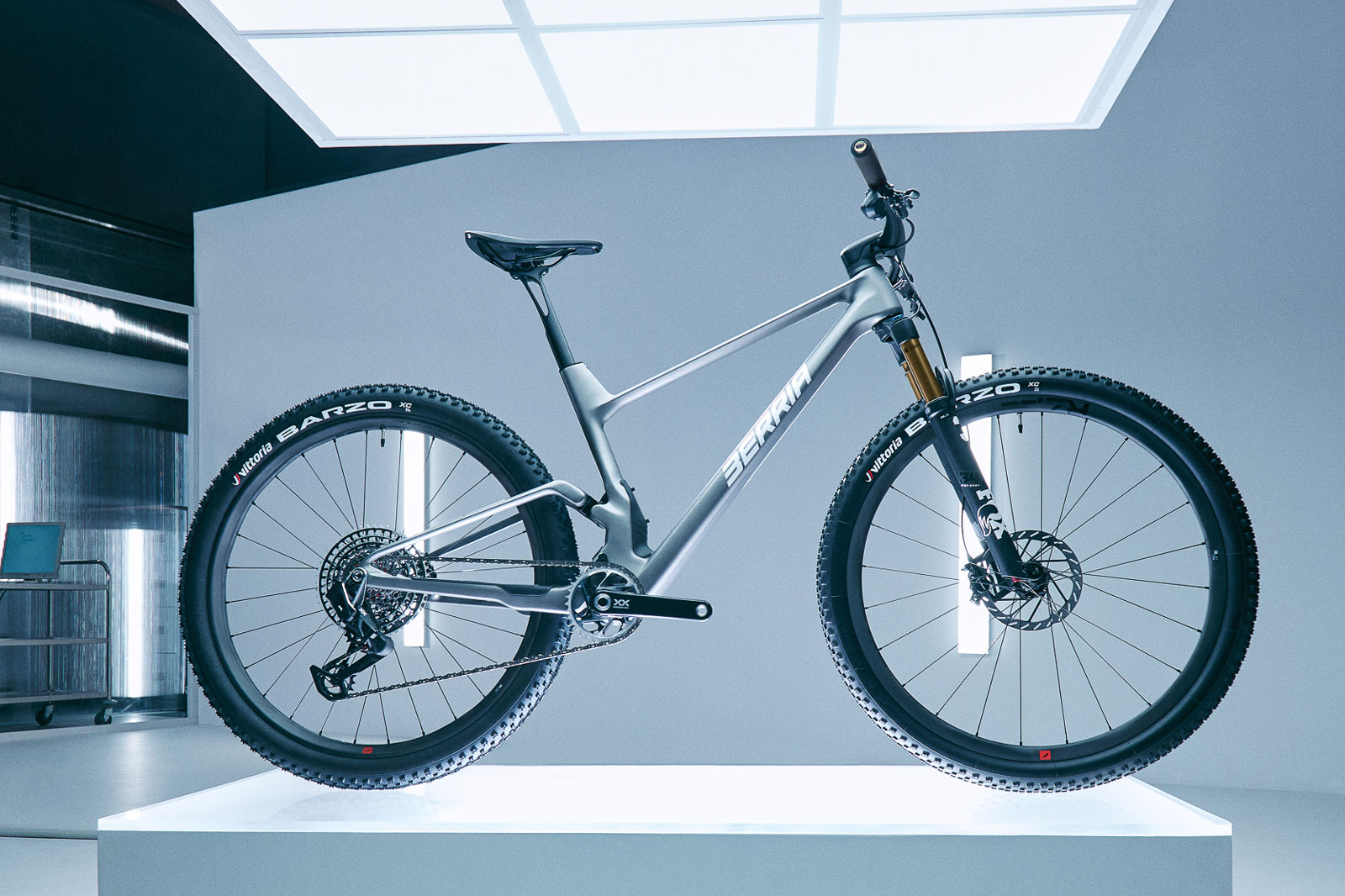
Spanish brand, Berria Bikes, has overhauled its range of short-travel mountain bikes with a new In-Link suspension design that hides the rear shock inside the frame. The new stealth approach to a flex-pivot suspension platform endows the 2024 Berria Mako with 113mm of rear wheel travel, paired with a 110mm fork.
There’s a Mako DC, too; this Downcountry format runs the exact same full carbon frame, but is fronted by a longer travel fork. The RockShox models get a 120mm fork while the Fox models get the longer 130mm. Either way, the DC versions deliver a slacker head angle for more confidence in steeper terrain. Here’s everything we know so far.
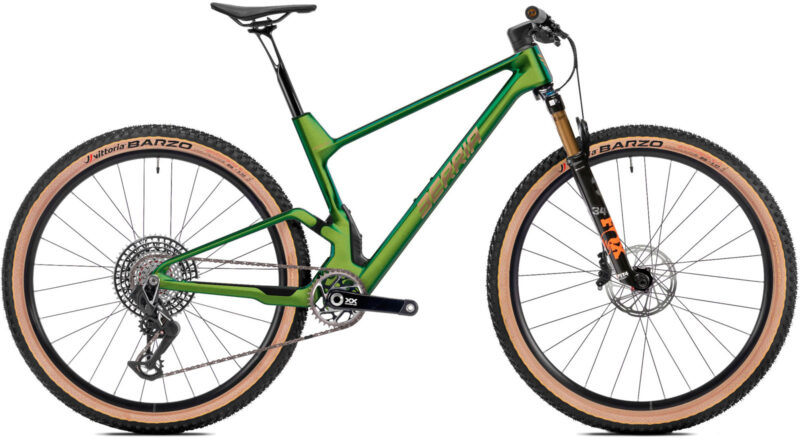
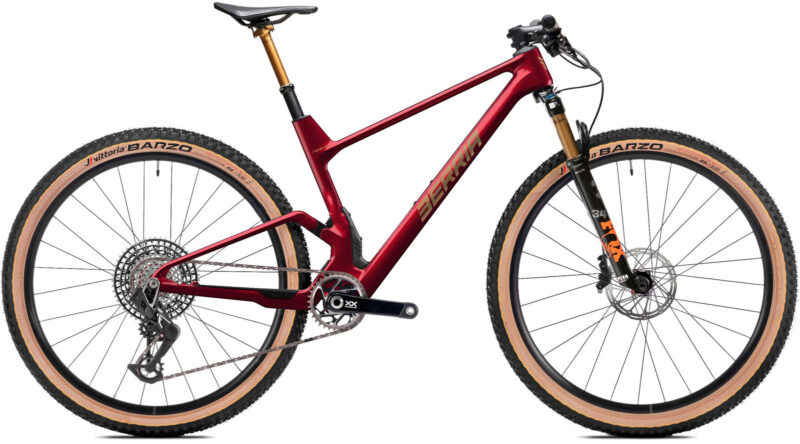
2024 Berria Mako & Mako DC
The Mako is the brand’s out-and-out cross-country race bike wherein integration is the order of the day; from the suspension design, to the cockpit and, for better or worse, the cable routing, too.
The bike is something of a departure from the previous Mako that took on a standard frame layout with the shock positioned vertically within the front triangle. The shock is still positioned vertically, but the 2024 Mako hides the rear shock inside the seat tube, inverted with a Trunnion mount for space considerations.
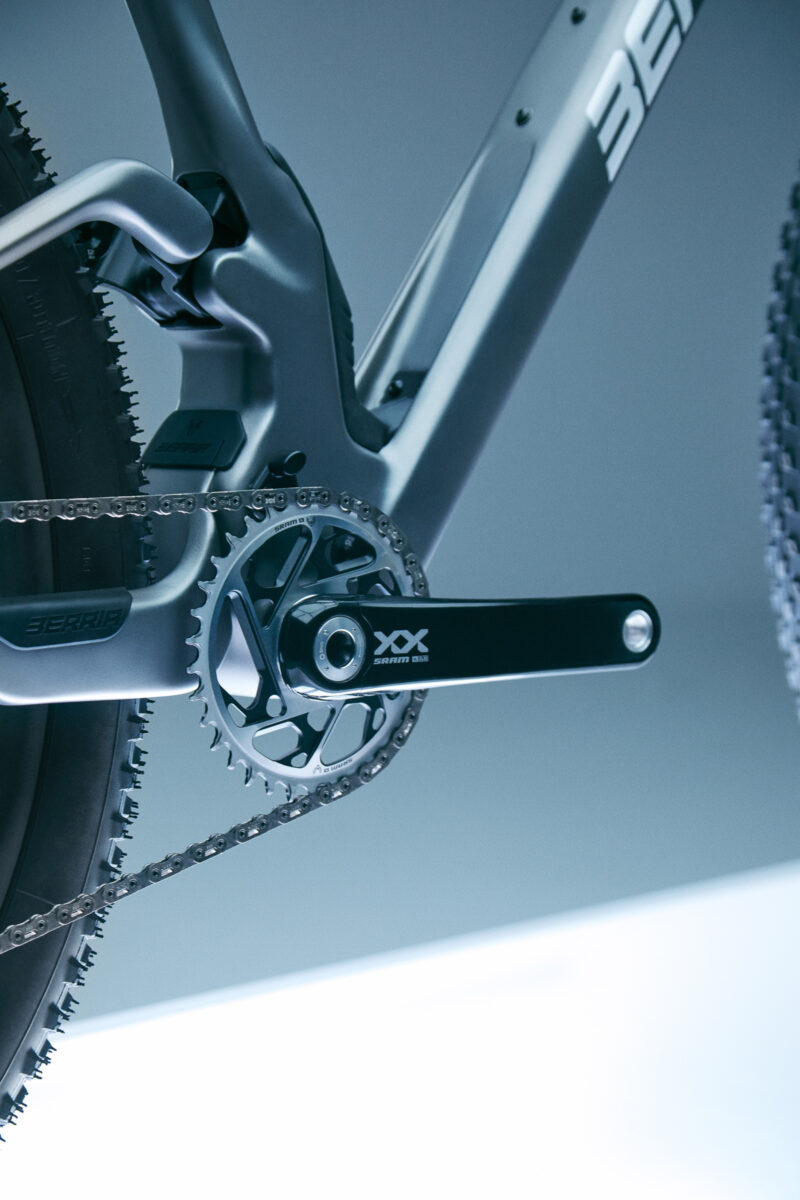
Any coverage of such a frame layout is incomplete without mention of the integrated solutions pushed by Bold and Scott. After all, such neat packaging makes them aesthetically similar; all have an unrivaled ultra-clean look about them. But, that’s where the similarities end. The Berria Mako is most similar to the integrated design we see on the Scott Spark XC bike, with a flex-stay suspension platform driving its 113mm of rear wheel travel.
The 2024 Mako comes in two distinct flavors; a pure-bred XCO race version with a 110mm fork, and a Downcountry version with a 120mm or 130mm fork. The former prioritizes efficiency and weight, with all five models sporting 2-piston brakes, with 25mm or 28mm rims and 2.25″ tires, a narrower bar (760mm) and a fixed seat post.
The DC is built to be a little more robust; all four models get 30mm internal width rims supporting 2.35″ tires, more powerful 4-piston brakes, a 125mm dropper seat post for extra clearance, and a 780mm handlebar with a 20mm rise. Either way, maximum tire clearance is 29″ x 2.4″.
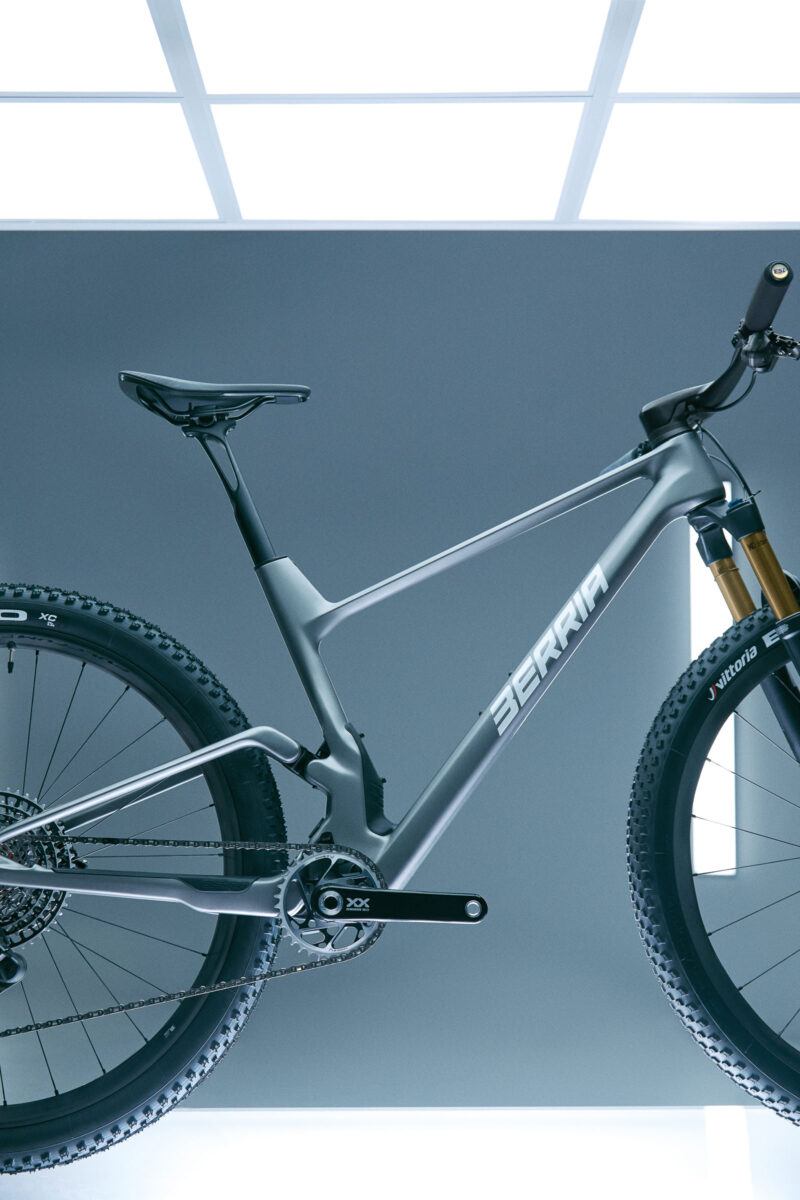
Mako Geometry
The 2024 Berria Mako is available in three frame sizes; S, M and L, accomodating a range of rider heights from 153cm to 200cm. All roll on a 29″ wheelset.
In conjunction with its all-new frame layout, the Mako gets a longer, more aggressive geometry befitting of the latest technical cross-country race courses. Across the size range, chainstays are shortened by 5mm to 430mm. Despite this, wheelbase is up by around 18mm thanks to longer reach figures and a much slacker head tube angle of 67.5° (M). That compares to the 69.2° head tube angle of the former Mako.
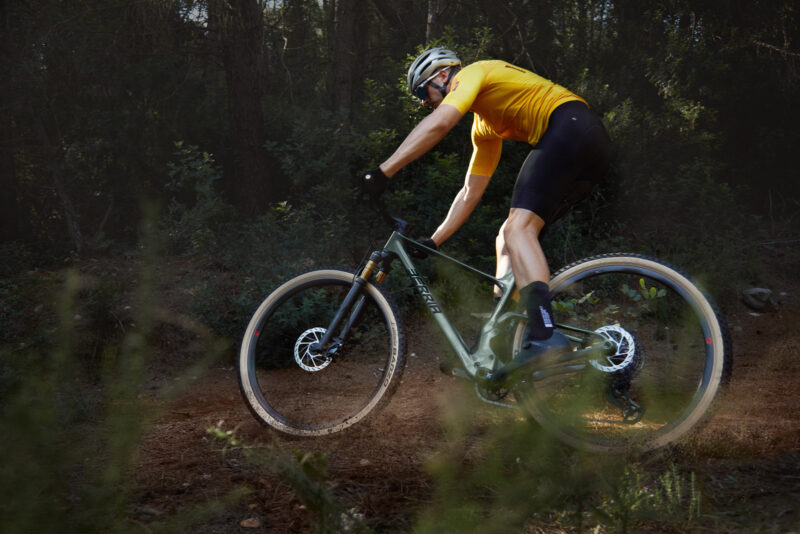
Reach figures come in at 435mm, 458mm and 485mm on the S, M and L frames, respectively. The medium is relatively unchanged here, but the small goes 20mm longer, while the large goes 10mm longer. Offsetting this more rearward bias is the move to much steeper seat tube angles; the medium has a seat angle of 76°, almost 2° steeper than the SA of the previous iteration.
Somewhat unusual is the change in head tube angle across the frame sizes. It is actually slightly steeper on the larger frame sizes; 68° on the L, and 67° on the S. We asked Beria what the thinking is behind this.
“The steering angle varies slightly to give more stability in small sizes and more agility in large sizes. This type of geometry helps to get closer to the perfect behavior of the Mako regardless of its size”.
Berria Bikes Co-founder, Jose Vittoria
Mako XCO Geometry
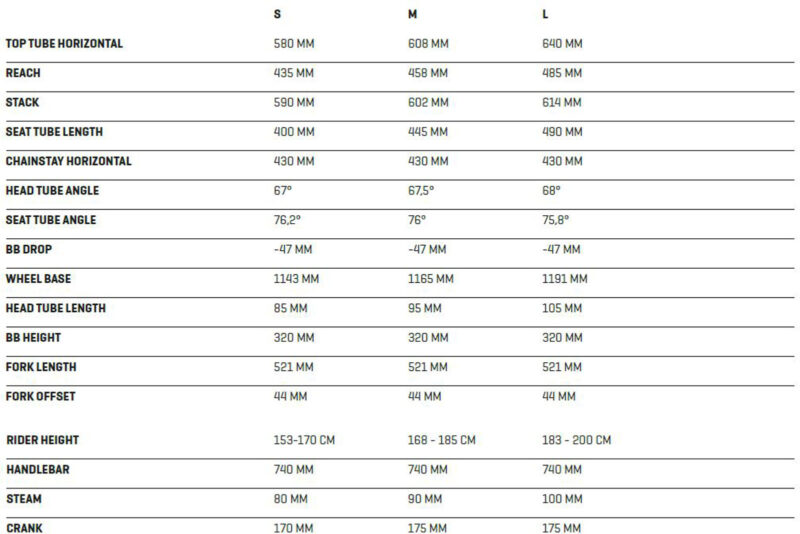
The above geometry chart pertains to the 2024 Berria Mako in its XC format, sporting a 110mm travel fork with an A2C of 521mm.
For riders intending to dabble in a little trail riding, the Mako DC could be the better option. As you might imagine, the Mako Downcountry bike is considerably slacker (66.5° HA in M) thanks to the longer travel fork and, as a result, reach figures are a bit shorter (448mm on the M). The BB is also raised by 7mm, putting it at 327mm.
Mako DC Geometry
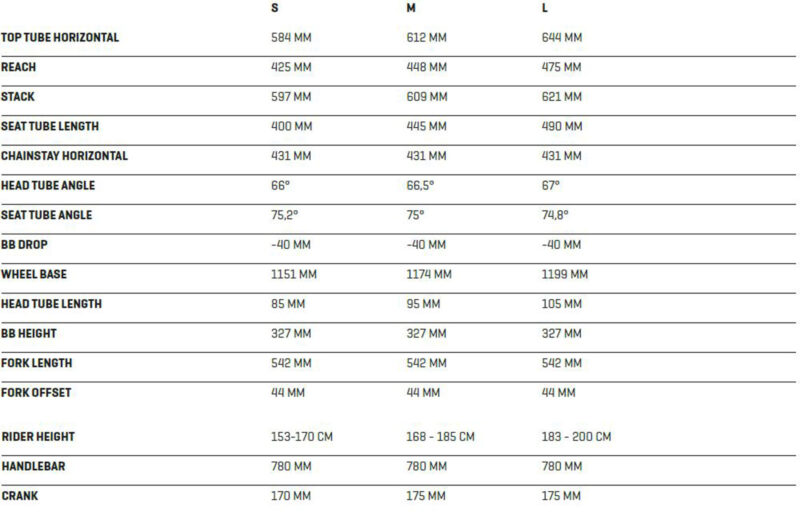
Frame Kinematic
Aside from the aesthetic appeal, an arguably more important benefit of the shock integration is its resultant lower position on the frame. Berria say this allowed them to improve the suspension kinematic considerably, though we haven’t been made privy to all of the specifics there. We do know that travel is boosted by 8mm to 113mm as compared to the previous Mako.
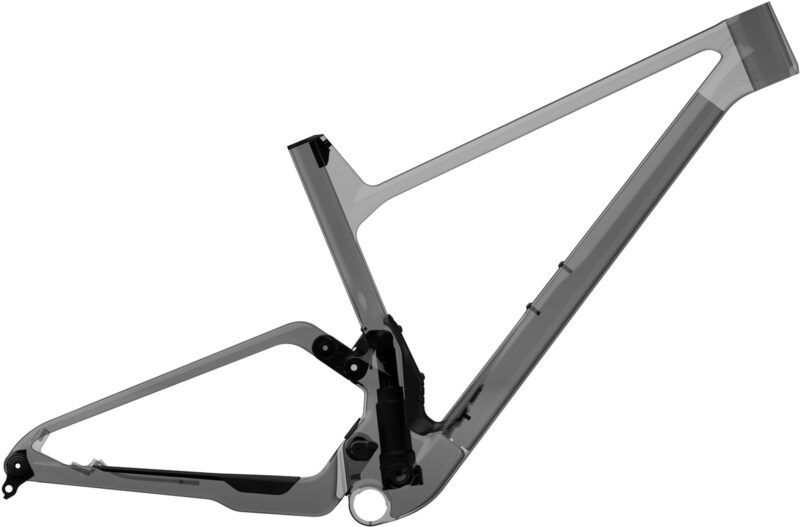
Also, this 4th generation frame has a slightly higher starting leverage ratio of 2.725, versus the 2.6 ratio of the predecessor. The mid-stroke is slightly less progressive, too. In the end-stroke region, the curve becomes regressive toward bottom-out after hitting a ratio of around 2.45.
Recommended sag is reduced to just 15% because “the shock absorber moves less due to pedalling forces”. That compares to the 18-22% recommended sag for the V3. We translate that to mean that the bike’s anti-squat values sit closer to 100% around this new sag point.
Berria also make reference to the protection conferred to the shock by virtue of its in-tube position. The recommended shock service intervals are unchanged, though, so don’t necessarily back that up as a tangible benefit. But, it is true that the shock’s shaft is less likely to collect any significant amount of muck.
A potential drawback is the lack of airflow around the shock, something that could lead to the shock overheating earlier during a race. But, this is seemingly less of a consideration in the world of XC racing where courses are more undulating.
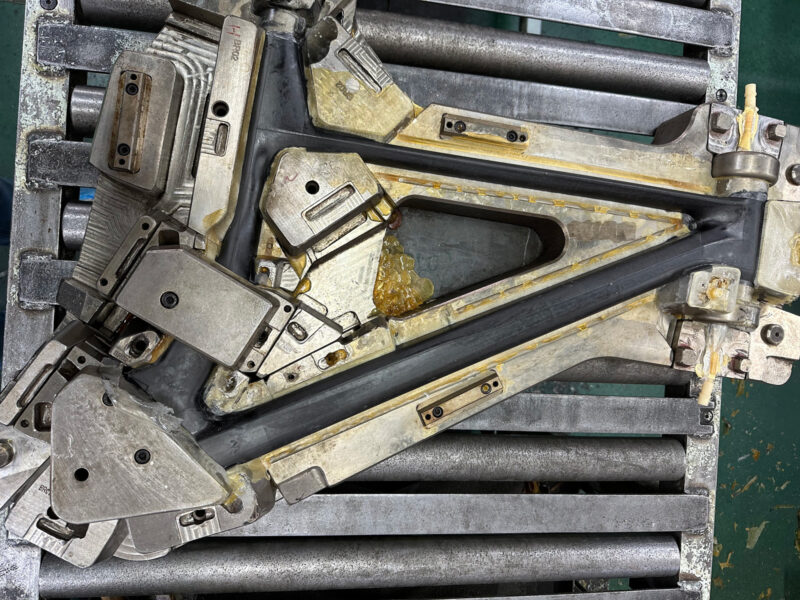
Frame & Component Details
Berria is launching nine models of the Mako, all with a standard carbon frame made from their HM2X fiber. It weighs a claimed 2,175g. Coming later this year is a premium BR carbon frame, made up of Berria’s UHM3X carbon fiber. Aimed at the XC podium hunters, that one boasts the more competitive weight of 1,875 grams (claimed). We don’t yet have weight information on the complete bikes.
All models feature fully integrated cable routing, entering the frame via the headset. It’s not to everyone’s taste, but it does deliver a clutter-free cockpit. From there-on, the cables and rear brake hose remain inside the frame until they exit at the chainstays.
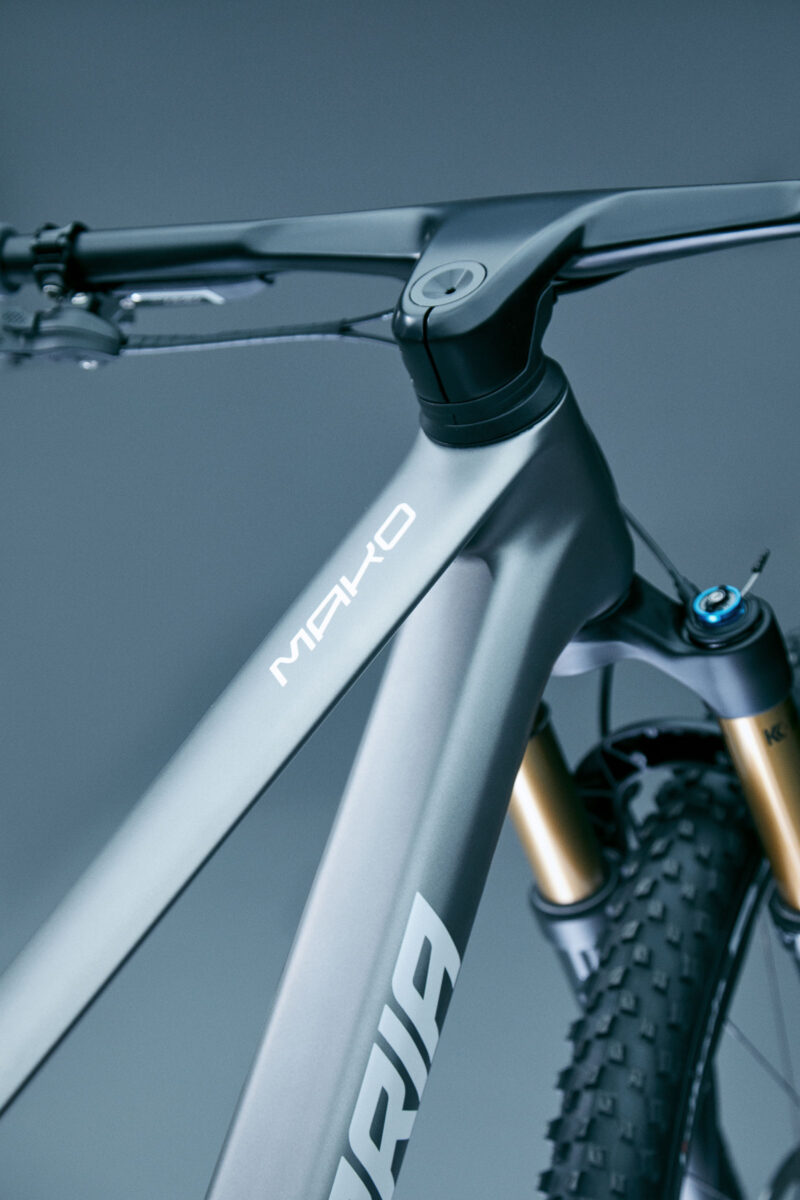
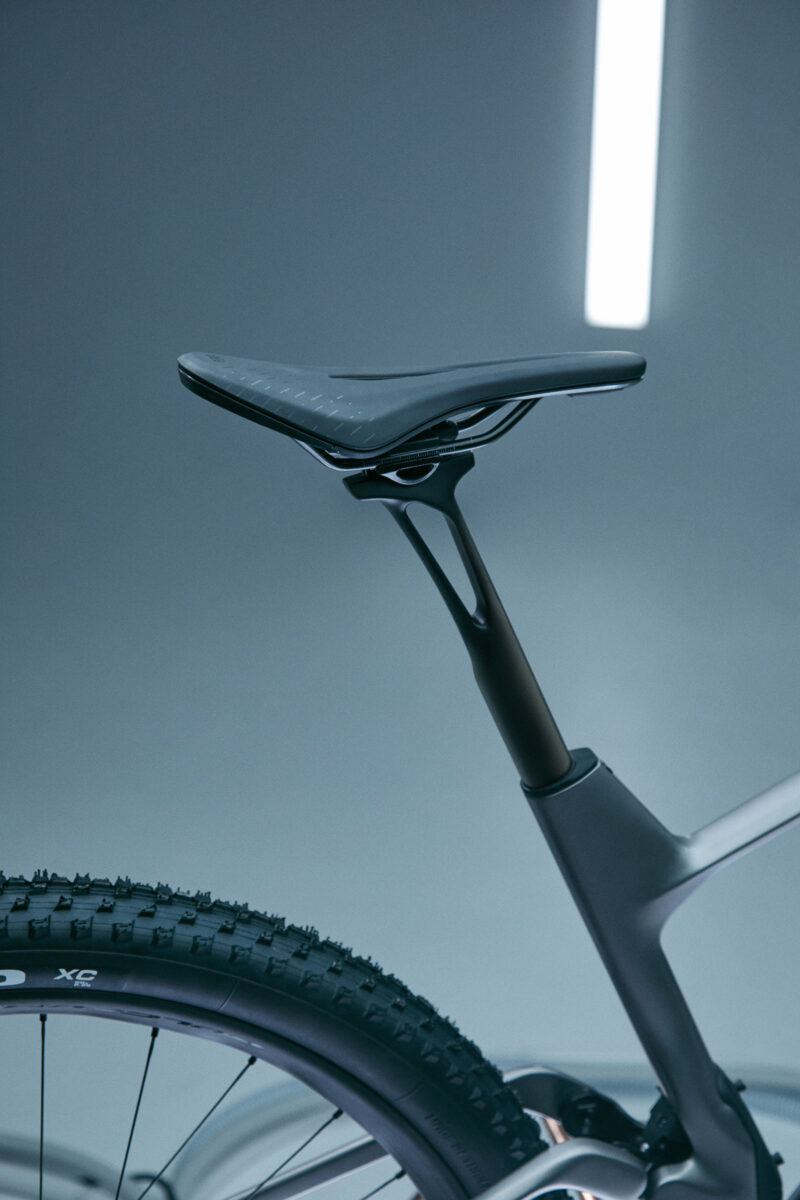
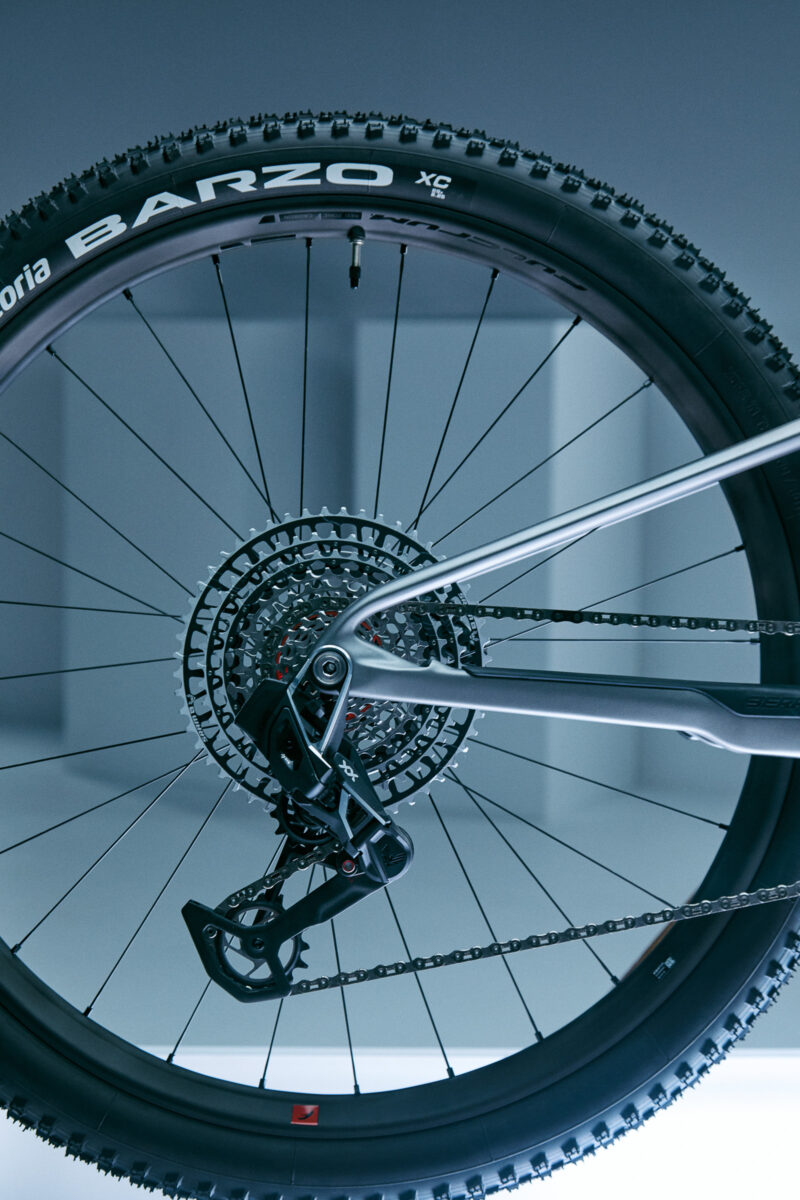
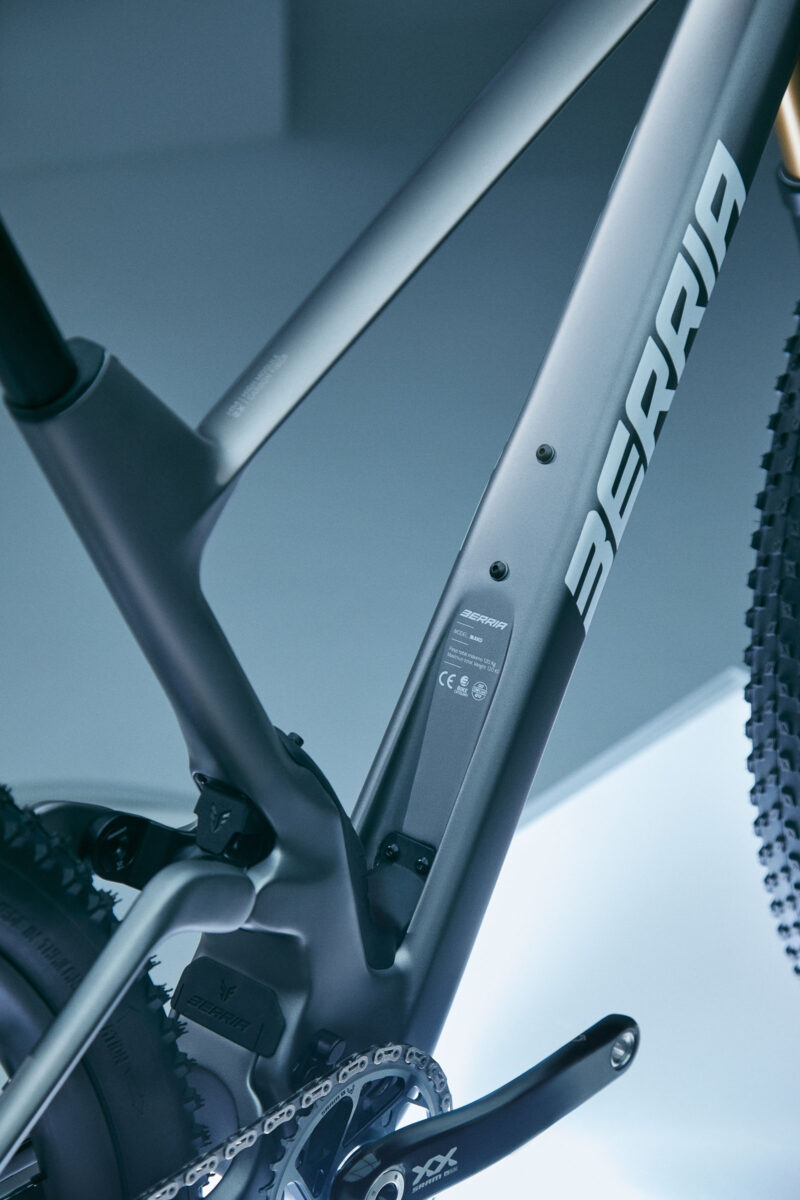
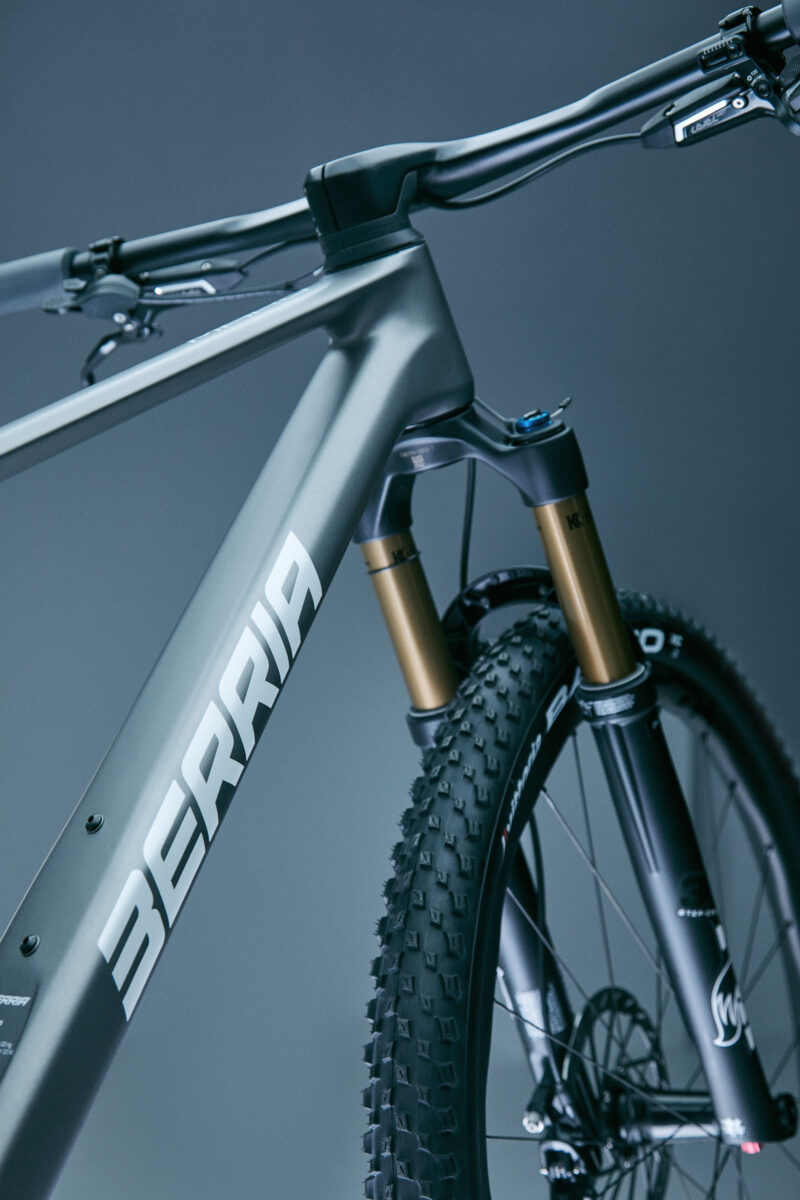
Adding to that sleek aesthetic is a carbon handlebar stem combo from Berria’s componentry brand, Avanforce. The Mako gets the 760mm Avanforce Aguila (Eagle) bar, with a 65-95mm reach (size dependent) and a -9° offset. For the BR models, the bar weighs a claimed 175-195 grams.
Meanwhile, the Mako DC models are completed with the 780mm Avanforce Condor bar. This one has no offset in the stem portion, but has a 20mm rise at the bar.
A final point of interest on the Mako frame is the unusual split seat tube, said to offer 14mm extra compliance. Aptly named the Tibia, this is a 31.6mm diameter post with a length of 420mm. It is made from Berria’s H2MX carbon fiber and weighs a claimed 220 grams. Only the XC Mako models get the Tibia post; the DC models get a 125mm dropper seat post.
Pricing & Availability
All five models of the 2024 Berria Mako, and all four models of the Mako DC are available today. Actual availability may vary across the different European markets. At the moment, Berria has a distribution network throughout Spain, France, Italy, Switzerland and the UK. We are told there are plans to distribute in South America and the USA soon.
Berria also plan to offer the Mako as a frame kit in due course.
As of yet, no pricing information has been communicated. For now, here’s a quick look at the models – head to the Berria Bikes website for more information on pricing and availability in your region.
2024 Mako
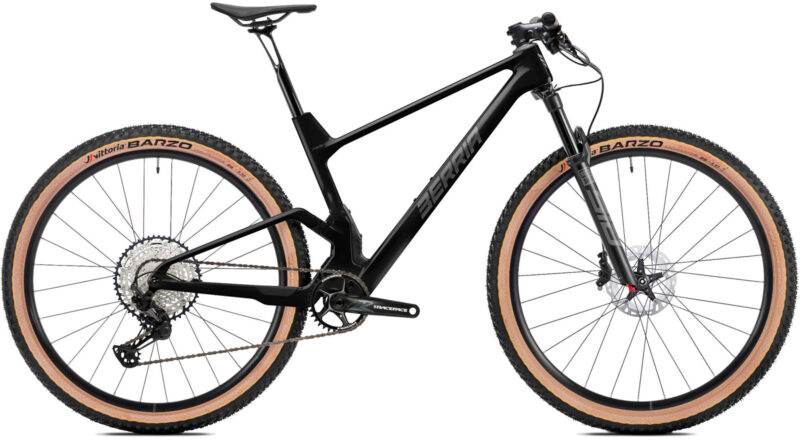
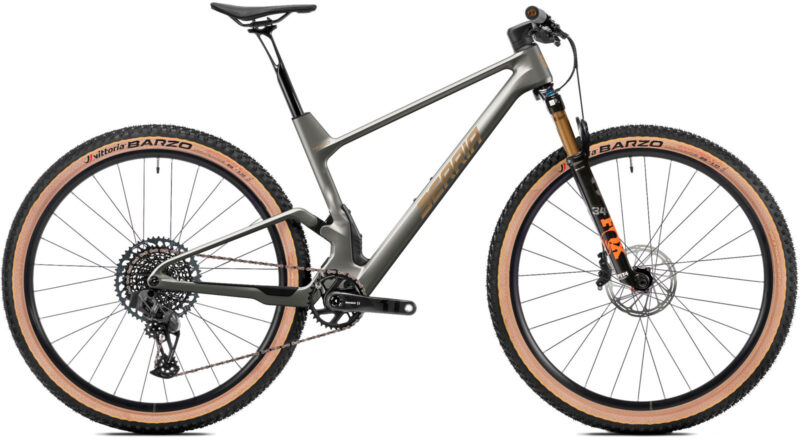
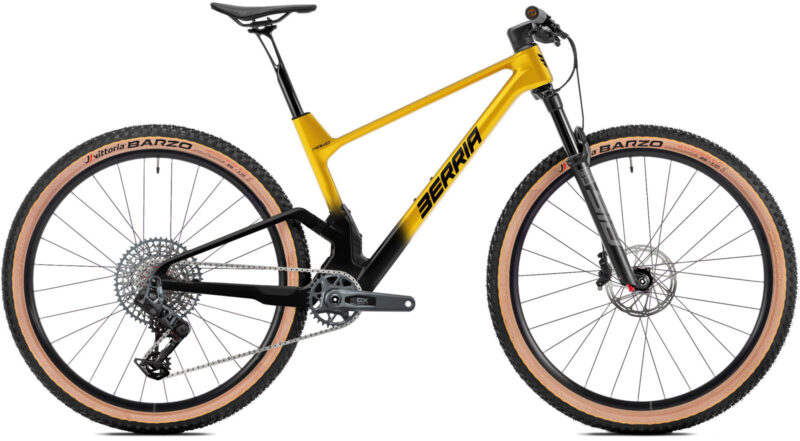
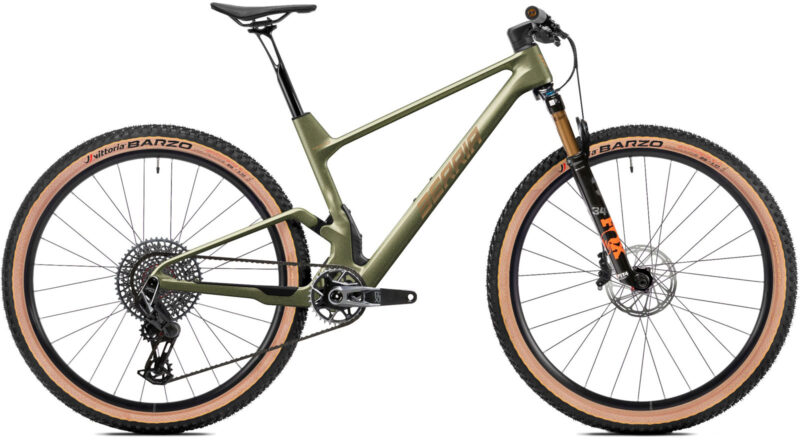

2024 Mako DC




The post 2024 Berria Mako XCO Bikes Gets In-Link Suspension for All the Integration appeared first on Bikerumor.
